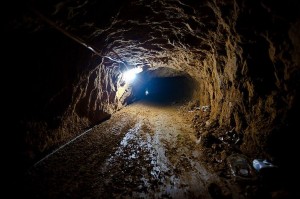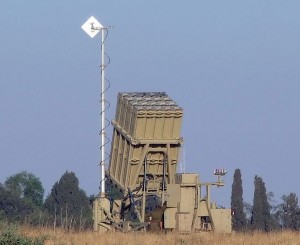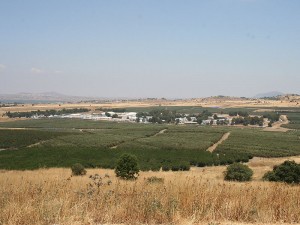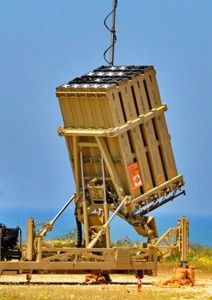Please be advised
Reports indicate that Homs Province’s Tiyas Military Air Base was targeted with missile strikes during the early morning hours of April 9. According to Syrian pro-government sources, its Air Defense System intercepted five of the total eight guided missiles that were used.
According to the Syrian Observatory of Human Rights (SOHR), at least 14 pro-government soldiers were killed, including an unspecified number of Iranian forces.
While Syrian state media initially described the incident as “American aggression”, Pentagon officials have reportedly denied any US involvement.
According to a Russian state news agency, the Russian Defense Ministry stated that the Israeli Air Force (IAF) carried out the strikes from Lebanese airspace with two F-15 fighter jets.
The Israel Defense Forces (IDF) have not issued any comment regarding the development.
Assessments & Forecast
The development comes amidst a marked increase of tensions between Syrian pro-government forces and Israel over the past months. This is highlighted by the February 10 launch of an Iranian unmanned aerial vehicle (UAV) into Israel from Tiyas Military Air Base. While the IAF retaliated by conducting strikes against four pro-government bases in Syria, the downing of an Israeli F-16 fighter jet with Syrian anti-aircraft fire during this action marked an achievement for the Syrian pro-government forces unprecedented in recent years. As these developments highlight the growing willingness of Iran and Syrian pro-government forces to challenge Israel, we assess that the aforementioned reports ascribing the current missile strike to the IDF are highly credible.
The operation follows the February statement by Hezbollah Leader Hassan Nasrallah, who praised the aforementioned downing of the F-16 fighter jet as “beginning of a new strategic era which puts an end to the violation of Syrian airspace and territory”. Thus, the targeting of Tiyas Military Air Base, which lies deep within Syrian territory, serves to reassert Israel’s deterrence and the countries’ adherence to its well-established policy of targeting any pro-government facilities which are liable to threaten Israel’s military and technological edge. More significantly, in light of Israeli concerns about the growing fortification of Iranian operational bases in Syria, the current missiles strikes demonstrate Israel’s increased resolve to target military installations used by Iranian forces.
Meanwhile, the Russian Defense Ministry statement holding Israel responsible is unprecedented, and thus highly notable. While Israel has carried out multiple airstrikes in Syria over the past years, since September 2015, Israel and Russia have coordinated such strikes through a bilateral deconfliction mechanism in order to mitigate the risk of conflicts between their armed forces. While the maintenance of this channel was hitherto regarded as tacit Russian approval of IDF action in Syria, the current statement indicates Moscow renunciation of this policy. FORECAST: Such a development would reduce Russia’s ability to function as a diplomatic backchannel to de-escalate tensions between Israel and Iran. Furthermore, it decreases the likelihood that Russia will pressure Iran to desist from expanding its presence near the Syrian-Israeli border. As a result, Israel will likely consider more robust military measures in order to contain this threat. Thus, over the coming months, the IDF is liable to increase airstrikes against Syrian pro-government targets across Syria, including Iranian bases.
FORECAST: Moreover, while Iran and its proxy forces are likely not interested in a broad escalation of hostilities with Israel at this point, the fact that Russia openly named Israel as the perpetrator of the current missiles strikes may pressure them to conduct retaliatory measures. While we assess that any such action will likely remain localized, more sophisticated attacks, such as IED detonations or RPG attacks targeting IDF soldiers positioned along the border cannot be entirely excluded. Should such a scenario materialize, both parties may be forced to react with increasing force to perceived transgressions of the other party in order to reassert their deterrence. Thus, while broad conflict between the parties remains unlikely to erupt over the coming months, a gradual increase of hostilities alongside the Syrian-Israeli border cannot be ruled out.
Recommendations
Recommendations: Syria
We advise against all travel to Damascus and Aleppo, given the general threat of indiscriminate aerial bombardment and artillery shelling from government forces as well as attacks by various militant groups. Attacks by rebel forces may include the use of rocket-propelled grenades, suicide bombings, and mortar attacks.
Those remaining in Damascus should ensure that contingency and emergency evacuation plans are updated due to the potential for a further deterioration in the security situation. Avoid all travel to outlying areas of the city given the persistent threat of militancy.
Recommendations: Israel
Travel to Israel may continue at this time while adhering to security precautions regarding militant attacks, while avoiding the immediate vicinity of the Syrian, Lebanese, and Egyptian borders, due to the persistent risk for cross-border violence.
Those residing or operating in Israel are advised to monitor the situation in the vicinity of the border areas regarding incidents of cross-border hostilities and possible rocket attacks. Remain cognizant of the situation along the Lebanese and Syrian border areas, and continue adhering to all safety precautions regarding early warning sirens for incoming rockets. In case you hear a siren, seek shelter in a protected area and remain inside for at least 10 minutes.



